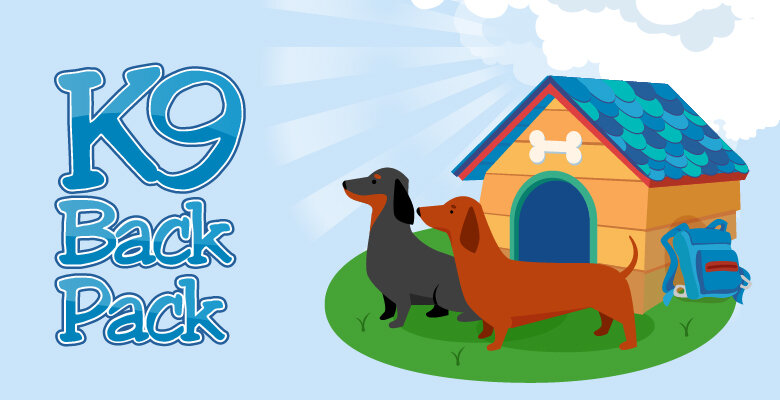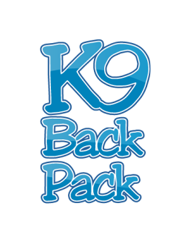All About IVDD
There is no substitute for good veterinary care.
This information is for educational purposes only and should NOT be used in place of consultation with your veterinarian.
The Basics
Although we all may be able to point to some activity (jump or rough housing) that we believe may have caused our dog’s disc problem, the truth is that Intervertebral Disc Disease (IVDD) is a disease our dogs were born with, and what happened is that a diseased disc had just gotten to the point that it was damaged enough for normal life to cause it to bulge or rupture out onto the spinal cord.
IVDD causes the discs to prematurely age and harden because they lose their moisture which keeps them soft and cushy and able to act as shock absorbers in between the vertebrae. Once they lose all their moisture, the discs then harden and stay that way. But in this hardening process before they become completely hard, the outer edges of the discs can weaken and start to tear. Through normal activity, those tears in the outer edges get bigger, and at the point there is a big enough tear, the inner soft cushy material oozes or ruptures violently out onto the spinal cord causing trauma, inflammation, swelling, and nerve damage in varying degrees from pain to partial or complete paralysis, and then sometimes in the most severe cases, loss of bladder and bowel control and then also deep pain sensation (DPS).
Bulging Discs
With mild episodes in which the disc has not ruptured yet, it is still developing tears along the edges, and with continued activity, will continue to tear. The tears get bigger causing the inner material to put pressure on the outer edges of the disc resulting in a disc that protrudes out of the disc space and onto the spinal cord causing compression on the spinal cord. That is why it is called a bulging disc. It is bulging onto the spinal cord and causes inflammation, pain, muscle spasms and perhaps minor problems walking. At some point, the bulging disc may rupture causing paralysis, loss of bladder and bowel control, and DPS.
If an episode is caught early enough when the disc is still bulging and has not ruptured yet and strict bed rest is followed, is there is a good chance that the disc will not go ahead and rupture. The disc can rebuild strength and become strong again by a process of healing similar to building scar tissue. Once it becomes strong again, the inner disc material will recede back into its proper place and relieve the compression on the spinal cord.
This is why strict bed rest is needed even for minor episodes. The disc has to heal in order to be able to properly contain the inner cushy material the way it should and prevent it from rupturing onto the spinal. The discs themselves have very poor blood supply and therefore take longer to heal than a bone. The body itself has to do this healing - there is no medicine that does it. Bed rest combined with the dog’s ability to heal is what it takes.
Disc Ruptures/Herniations Sometimes the signs of the disease process go completely unnoticed because the dog is very brave and hides pain very well or the subtle signs are misinterpreted as something else such as a pulled muscle, strained leg, or a tummy ache. Then suddenly, the dog is paralyzed. A dog that is still walking, even though very wobbly, may have suffered a disc herniation as there are varying degrees of damage caused by the spinal cord compression.
The Importance of Bed/Crate Rest in Conservative Treatment
Conservative treatment utilizes bed/crate rest to minimize movement so the disc can heal and medications to resolve inflammation around the spinal cord and control pain. Bed rest is one of the most important aspects of conservative treatment so that the disc can build scar tissue and prevent more inner disc material from escaping out onto the spinal cord causing more compression and damage. No medication heals the disc - only restricted movement. If you don't restrict the dog’s movement with strict bed/crate rest, the disc can get started healing but normal activity can cause it to break that scar tissue which was forming, and then it has to start all over again trying to heal. Just like a cut on your knuckle, move it too often while the scab is trying to form and it breaks open and the cut bleeds again. The very same concept applies here but with a dog having a disc problem, the inner disc material leaks out onto the spinal cord causing more spinal cord compression and damage. Simply put, if you don't keep the dog restricted in bed rest and limit its movement, activity will not allow the disc to heal.
One of the best ways to think of bed/crate rest is to compare it to a broken arm or leg in a human. A human broken arm/leg needs a cast to allow it to heal properly. Bed/crate rest for a disc episode is like a cast for the dog’s back. Don’t worry about losing muscle mass. Muscle mass can be quickly regained after bed/crate rest is over. Spinal cord damage can be permanent.
Surgery
Surgery is considered the treatment of choice by many vets when a dog has suffered a disc rupture/herniation because surgery removes the disc material from the spinal cord immediately relieving the compression, which many times, limits permanent damage to the spinal cord. If surgery is a financial possibility for your family, then getting your dog to a board-certified surgeon as quickly as possible is best. You can find a board-certified surgeon here:
Veterinary Specialist: vetspecialists.com
Orthopedic Specialist: ACVS.org
The Future
YES, your dog can recover and go on to live a long and very happy life!! Some dogs never have another disc episode while others go on to have repeat occurrences. No one understands why. We don’t want to portray the situation as doom and gloom, but since there is no cure for IVDD, more of the dog’s discs may be prematurely aging. There is also no way to figure out which dogs will and which dogs won’t have further disc episodes. Without expensive diagnostics such as an MRI, there is no way to tell what stage of the disease process any one disc is in; therefore, it is a good idea to limit the stress on the dog's spine in any way possible for the rest of its life. Reducing stress on the spine entails restricting the dog from jumping on and off of furniture and using ramps instead of allowing your dog to use steps and stairs.
No matter what level of recovery your dog has, he/she is going to get back to living life to the fullest!!
Count on it!!


